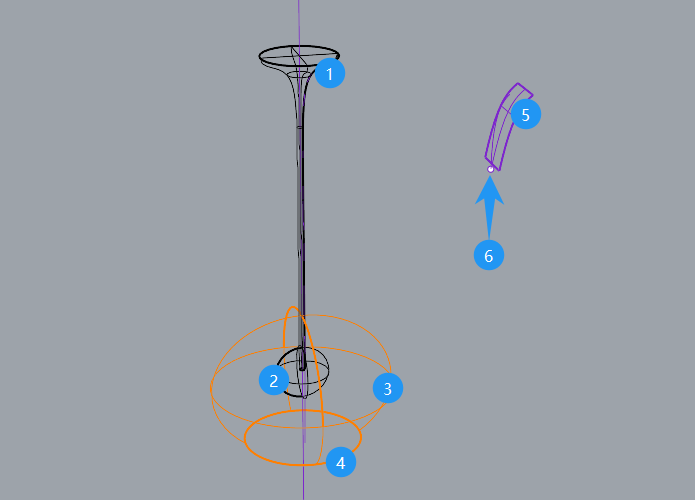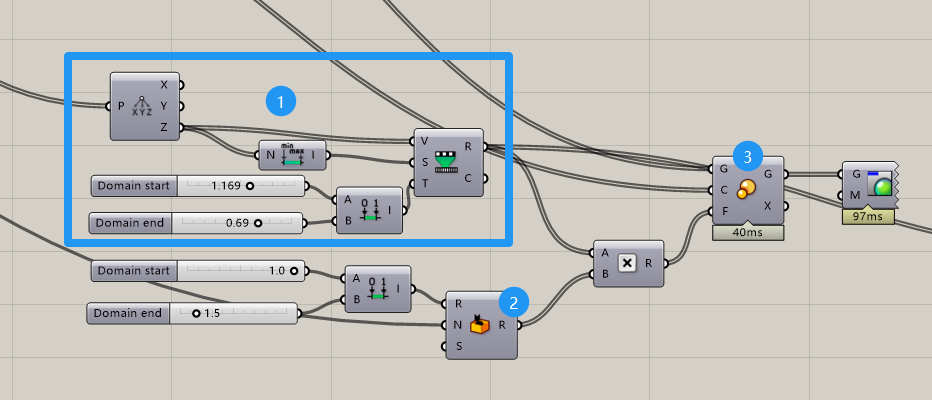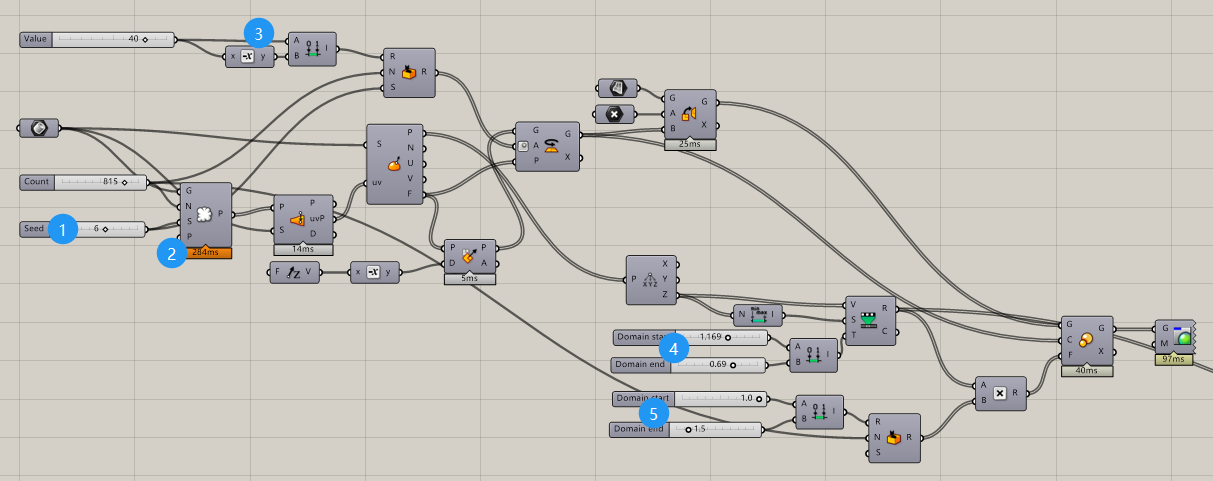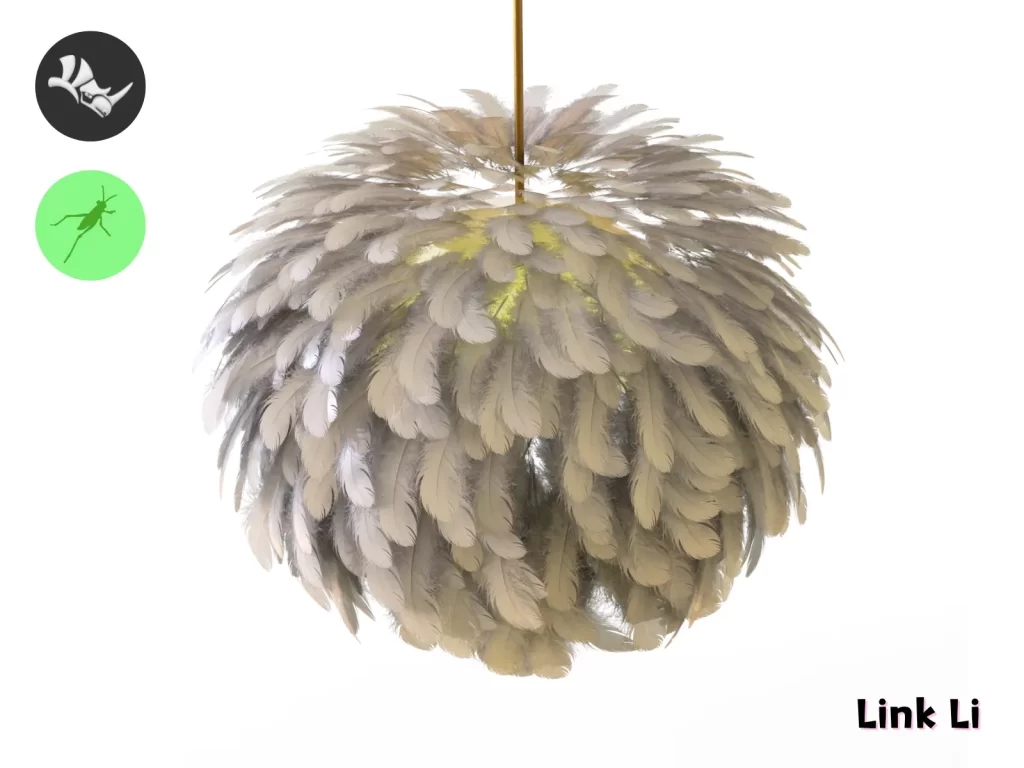Tutorial on Parametrically Making a Creative Feather Chandelier with Grasshopper
I. Create chandelier components in Rhino

-1️⃣ Use a curve to create the cross-section of the rod, then use the Revolve command to create the rod model.
-2️⃣ Create the bulb model with a sphere and adjust it to an appropriate size.
-3️⃣ Create the lampshade model with a sphere, adjust it to a suitable size, use F10 to turn on the control points, adjust the point positions to control the shape of the lampshade until satisfied.
-4️⃣ Draw a straight line at the bottom of the lampshade and trim off the lower half of the lampshade.
-5️⃣ Draw a batch of feather planes outside the chandelier model area, as preparation for the feathers covering the feather chandelier. The size can be arbitrary and can be modified later.
-5️⃣ Place a reference point below the feather plane, which will be used as the base point for feather placement.
II. Position the feathers onto the lampshade model

-1️⃣ Use Brep to get the lampshade model.
-2️⃣ Use the Populate Geometry component to generate positioning points.
-3️⃣ Use the point analysis tool to generate positioning planes (see video for details).
-4️⃣ Randomly adjust the angle of the generated positioning planes, with the angle set between 40° and -40°.
-5️⃣ Use the Orient component to position the feather unit from step 1 onto the lampshade model.
III. Apply randomness to the feathers positioned on the lampshade

-1️⃣ First, calculate a gradient based on the height of the feathers in space: the higher the feather, the smaller its size.
-2️⃣ Then use a random number algorithm to randomly vary the size of all feathers, making the feathers look more natural and staggered.
-3️⃣ Connect the above parameters to the Scale component.
IV. Adjust the lampshade parameters until the shape is satisfactory. The following Grasshopper parameters can be adjusted:

-1️⃣ Number of feathers
-2️⃣ Random seed for positioning points
-3️⃣ Feather angle range
-4️⃣ Feather size variation by height
-5️⃣ Overall feather size variation
V. Bake the feather planes

-1️⃣ Use the bake command to bake Grasshopper objects into Rhino objects.
-2️⃣ Apply feather textures. The texture format must be an image with an alpha channel.
-3️⃣ Apply the feather image to both the color and transparency layers to achieve the feather effect.
[membership_download_product_links layout=“box”]


一个回复
Good!